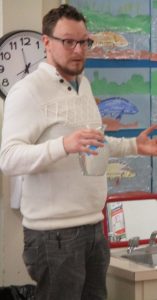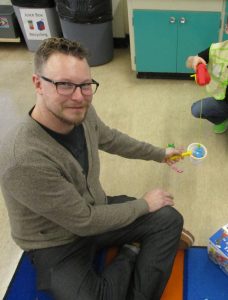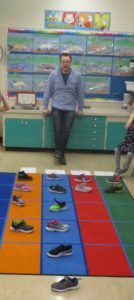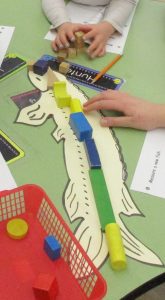




Detailed Math Lesson, December 9, 2019 with completed reflection
Detailed Math Lesson, December 12, 2019, Z. Forster with completed assessment
Science Lesson Plan, Bilby Moon with completed reflection.
How are my identity, culture, and education are interconnected?
While studying to become a teacher, the question of how I as a non-Indigenous person work toward social justice causes me to think about my personal cultural identity. I’ve included this short essay written as part of a course take-home exam, UNBC fall 2019, to demonstrate my current thinking about being an authentic ally to First Nations, Metis and Inuit people.
Implications for me as a non-Indigenous teacher from two models of Indigenous education:
When I will look at the implications for me as a non-Indigenous teacher from the model by native Maori speaker, Kate Cherrington, Te Wananga O Aotearoa, I see the learner placed at the centre of the process, “It is from this centre that the meaning and reason for education originates.” (Chapter 2, p. 31) and that she has given a place within the model for both Native and non-Native persons. Kate passionately believes in the power and necessity of Indigenous children being immersed in traditional language, culture, ceremony, ritual and spirituality while being surrounded by family and community. She also stresses that the model does not remain in the past but circles dynamically into new learning and the way into the future. “Native people must grasp the tools of the present and the future. I want to emphasize the importance of learning in this model… We must teach our children how to use these tools as vehicles through which to manifest Native aspirations.” (Chapter 2, p. 32)
Okanagan scholar, Jeanette Armstrong “Calls for political action to recover and revitalize Native language and culture… The passion of each Native leader is to seek official recognition of their Native language, to create policy that integrates Native language into schooling and governance, and to develop Native-based teacher education, leadership, and curriculum and instruction. This, as Jeannette advocates through her model, is the pathway to saving our Native children and youth.” (Chapter 3, p. 36) Jeannette’s model uses four concentric circles that surround a centre named the “Dance House”. Each circle represents an element; the self, the family, the community, the intellectual and all brought together by the land. Spirituality is practiced throughout the quadrants. The approach has led her community to assume ownership of education for Indigenous children and youth. “An outcome has been that we now have cultural Okanagan life ways (values) in our schools that call on our extended family members to participate in the cultural and language learning…We decided to practice this educational model in our community to help replace the dysfunction that residential schooling had caused, but to do it in a nonconfrontational way. We have not gone and said, ‘You’ve got to change your educational system!’ We have simply started our own educational plan and process and have carried it out…Language revival and spiritual practices of the Okanagan since the mid 1990’s have swept our community.” (Chapter 3, p. 43)
An example of being an Ally from my personal experience:
In the role of an EA at Ron Brent Elementary School, I was given the scenario of full- time segregated support for two Indigenous students both of whom had endured trauma and were unable to cope alone in a classroom setting. I constructed and implemented a curriculm for the two children. I was an authentic ally in this role. I began my process with understanding, not just the children, but the culture from which they were spawned. As such, I was able to successfully relate to these individuals and create a positive relationship. I placed the learners in the center of my concentric curricular goals. Understanding the children allowed for this. As we ventured together, I became aware of triggers for fear in the children and areas of individual strength. We navigated this tempest with a silver lining focusing primarily on the students’ well-being and learning strengths.
I had also realized that these students were intelligent. Their academic struggles did not stem from a handicap, but rather from behaviour that was in-conducive to the accepted scholastic norm. I endeavored to create a more culturally relevant arena and to expect grade-level work from these students rather than whatever they felt like giving me. This was in contrast to what had been interpreted and expected from them in the past. There was an unspoken understanding within the school community that these children suffered from fetal alcohol syndrome and as such were not “capable of much”. I gleaned little evidence to support this stance and successfully extended their learning the way an authentic ally should.
We focused on animals and hands-on activities which deviated from their previous academic paradigm. Animals were very much present in the students’ culture and they seemed to relate well to them. By entering at this point we could tackle cross-curricular agendas successfully.
I functioned as an ally to the parent of these students. Their mother had experienced a negative scenario when she had attended school. She did not care for school and saw it as less important. I proceeded by understanding her point of view and respectfully conducted myself as an enlightened ally on her behalf. We chatted and discussed the children, I became a safe gateway into a world which she felt trepidation entering.
To be an authentic ally to Indigenous peoples in my teaching practice, I must engage in continual learning and reflection about First Nations, Metis and Inuit cultures and history. As an ally, I will question if and how I may be coming from a position of power and privilege. I will accept that privilege has come from unjust systems that have marginalized the groups with whom I seek to ally. To be a true ally in my classroom work, I will need to ensure that my First Nations, Metis and Inuit students, belong, are respected and achieve academically, physically, socially and emotionally to their full potential. There can be no place in my practice for the racism of lowered expectations. My model of education must place the learner at the centre of my practice with family, community and language surrounding the child. I will have to do what is within my power to dismantle colonial systems and to change my own behaviour if warranted, being mindful of not contributing to keeping that system going.
I share the belief put forward by Kate Cherrington, that models for Indigenous education should be inclusive of Aboriginal and non-Aboriginal persons. Kate speaks of the need for Native groups to hold fast to Native values while developing dynamic, forward thinking educational strategies and new learning. “I believe strongly that this Indigenous model must be inclusive, not exclusive. It is not just for Native people, but also for non-Natives.” (Chapter 2, p. 32) Indigenous ways of knowing and doing as they inform educational practices are good for all students and essential for First Nations, Metis and Inuit children and youth. I will seek to by an authentic ally in this work.
Maenette Kapeàhiokalani Padeken Ah Nee-Benham with Joanne Elizabeth Cooper (Ed), Indigenous educational models for contemporary practice: in our mother’s voice, this edition published in the Taylor & Francis e-Library, 2009. Copyright © 2000 by Lawrence Erlbaum Associates, Inc.